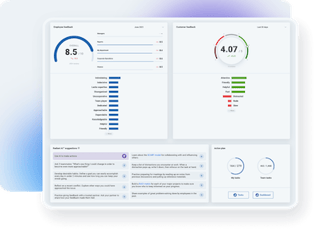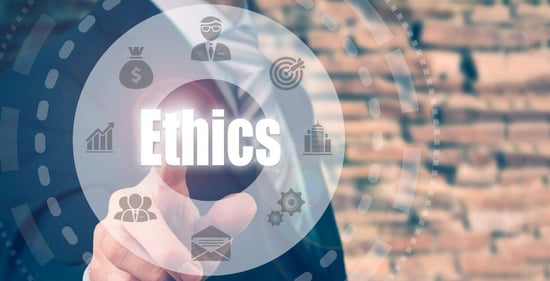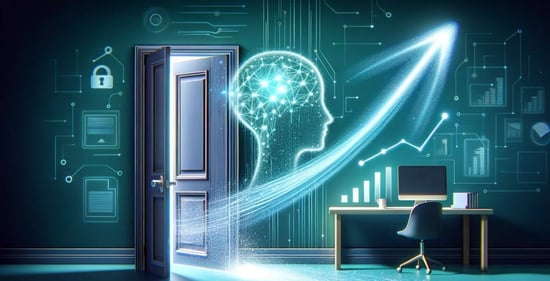
AI’s coming through your HR door: Is it a team culture threat or a match made in heaven?
How does HR impact team culture?
HR managers sometimes lose sight of their primary job vision - harnessing human resources into teams firing on all cylinders. Indeed, stakeholders expect their executive HR professionals to develop solution units that rise to challenges, improve employee retention, and eliminate problems.
Moreover, human resource management must build trust, transparency, collaboration, upward mobility, and belonging as the energizers of a robust team culture. Invariably, these efforts align with a sustainable business ethics code and data privacy in HR to achieve unsurpassed employee engagement.
a. Every HR department carries a massive responsibility.
A competent HR team should connect solid talent acquisition, benefits administration, employee records management, and career development initiatives to penetrative organizational strategies. Also, thoughtful learning and development programs are essential to drive an enriched employee experience.
Many organizations with qualified HR professionals, even before COVID-19, believed their HR management formula was working just fine. Corporate leaders were confident their human resources pools - filled with committed skilled staff - perfectly matched the challenges. That was until using AI in HR hit the scene as a significant “two-edged sword” disruption.

b. Artificial intelligence in HR - is it friend or foe to team culture?
HR teams find themselves in conflict, inviting in a resource that isn't human. It begs the question, "Is it the organization's intention to replace people bias with algorithms or deploy the speed and tuition of generative AI to jet-propel team performance - taking the employee experience to another level?"
Anyone who thinks AI technology and its close cousin - Machine Learning (ML) - represent a passing phase in the millions of HR departments guiding SMBs and enterprises should think again. These technologies are firmly in the operational equation - according to McKinsey - promising HR leaders in every industry they can:
- Fill skills gaps, improve employee training, innovate career development, and build unimagined performance management metrics.
- Save thousands of human hours doing mundane administrative tasks, and support HR confidentiality.
In short, artificial intelligence claims to be a friend of human resources, not an enemy.
c. Team culture resilience is in the balance.
So, if one believes the SaaS and App hype around AI implementation with natural language processing, then using it is a slam-dunk opportunity not to be missed. However, team culture is not something to take lightly. A fragile fabric surrounds it, reliant on the crucial attributes mentioned above, easily torn and shredded if employee fears bubble to the surface.
Mismanaged AI tools will test employee experience and human resources strategies to the max - potentially corrupting:
- Transparency protocols
- Job security
- Organizational trust
- Inclusivity
- Trustworthiness
- Explainability
Thus, HR professionals must analyze employee data in detail for insights into unwelcome AI options that send the wrong signals. Such as? Anything that appears to actually or potentially put employee safety, livelihood, and rights on the chopping block.
How AI supports and benefits HR departments in 2023
AI tools are front and center of significant human resource management benefits that begin with streamlining workflows and upgrading decision-making to create the following:
1. Accelerated employee engagement efficiency.
Armed with sophisticated AI methodologies, human resource management can collect and analyze available data with significantly improved accuracy. Thus, they can erase HR biases and guesswork from onboarding in a competitive talent market, employee development, and other crucial HR manager functions.
A good example is when AI's screening and selection process uplifts talent and skills selection via algorithmic analysis of resumes, closing out the imperfections of human subjectivity. In addition:
- Say goodbye to mind-numbing repetitive routines, time-consuming tasks, and wasted talent better deployed elsewhere in the company.
- Say hello to virtual assistants and AI-generated predictive analytics that substantially tighten decision-making and performance management with groundbreaking metrics.
2. Reduced costs.
Big data is arguably a company's most valuable asset today, the target of hackers and cybercriminals. Before generative AI technology got traction, mounds of information sat dormant, helping nobody. Why? Because without digital ingenuity in one’s armory, there was no way to dig through it and derive patterns.
It would take a colossal team effort and probably months to do a job half as efficiently as artificial intelligence software can do in minutes - with enhanced accuracy. For example, lucrative market segments have emerged almost seamlessly - hidden from human detection for decades. It's the fuel of the startup era, where groundbreaking innovations disrupt traditional enterprise domination almost overnight.
3. Better decision-making.
The artificial intelligence metrics and recruitment analytic capabilities are impressive at the touch of a button. It has boosted HR teams' performance management that aligns with selecting suitable candidates and matching them with compensation and benefits plans that fortify a robust team culture. As a result, the entire human resources framework for HR professionals everywhere has changed. For example, KPIs deliver insights into:
- Job advertising performance
- Cost per hire
- Time to fill and hire
- New-hire turnover
- New-hire retention rate
How to establish ethics in HR using AI strategies
In this section, we’ll address the challenges facing HR teams grappling with an AI technology stream disrupting (or threatening to disrupt) traditional team cultural values (described above) - especially if the latter begins to crack at the seams. Artificial intelligence ethics is a vast subject, so we can’t cover every vertical. Still, the two categories we’ve selected (see below) are enough to look at the darker side of the employee experience coin with AI-powered tools in the mix:
1. Protocols around sensitive data.
Undoubtedly, the digital era ushered extraordinary changes that quickly improved our lifestyles. Unfortunately, it fell into the laps of tech-centric "nosy-parkers" in the workplace who, for example, want to know how much their peers earn or any other juicy details that will give them a leg-up on the promotional ladder. Data privacy leaks were everywhere if one knew what to look for.
Even worse, cybercriminals want to know everyone's details for far more sinister purposes. Ransom attacks and other hacker incursions are snowballing into challenges frequently beyond the scope of even experienced IT teams.
a. Who’s to blame?
HR team distractions are taking its eye off the IT ball, for sure. However, things go much deeper. While employees may fear this and react aggressively when personally affected, they're a massive part of the problem.
A study by ThycoticCentrify - surveying 8,000 workers worldwide - represented mind-shifting insights. Can you believe that:
- Nearly 80% of the respondents admitted to taking at least one cybersecurity risk.
- 35% ignored company password protocols.
- 25% didn't think twice about using personal devices to interact with company data.
- More than 50% clicked on unknown URLs on company devices.
- 98% of the culprits circumvented organization security measures knowingly.
- Remote workers regularly use coffee shops as office venues with "iffy" WiFi connections.
- Startlingly, only 16% believed their company was at cybersecurity risk.
b. The Solution.
Rally human resources management from every angle. The latter must organize their HR teams to develop IT learning and development programs. Most crucially, ensure that your AI provider covers every security concern with cutting-edge technologies. So, having an AI/ML-centric platform like Macorva in your corner to select products and services to close vital data security gaps and create awareness is worth its weight in gold. Why? Because mishandling AI tools is an invitation to exploit data breaches and disrupt privacy rights.
In addition, the remote and hybrid working environment requires laser-focused attention and significantly stepped-up investment to convert home offices to head-office standards.
2. An unbiased recruitment process.
As mentioned above, today, enterprises universally rely on algorithmic hiring platforms to save time and money, significantly speeding up the employee engagement process. Here's the problem - it all circles back to the magical black box guiding our decisions. What does this mean? Read on.
a. What’s in the AI algorithms?
When you get into the granular details of machine learning algorithms, they learn from analyzing data your organization mines (and other data sources in the cloud). So, the biases one's attempting to avoid haven't disappeared if the source information pool is full of them.
Garbage in, garbage out (GIGO) explains it best, no matter how much faster or cost-effectively the software works for you.
b. The Solution
Two primary considerations emerge:
- Firstly, GIGO highlights data engineers’ unique skills - cleansing information of input biases, imbalances, and "old school" subjectivity that obstructs genuine objectivity.
- Secondly, unless the people working in, entering, and exiting the organization believe and trust in the recruitment/privacy/employee review process, it will stutter and fail to attract the candidates your organization is looking for.
So, the challenge, for the most part, doesn't lie with AI. It rests with employee training - a learning and development program - to (a) only insert valid data and (b) explain the ins and outs, thus overcoming tradition, outdated beliefs, and traditional human fears.
If people can "cross the Rubicon" and have confidence that the organization's technology aligns with their needs, there will be a groundbreaking shift in team culture.
Conclusion
In April 2021, the European Commission addressed AI systems, HR processes, and analyzing employee data with significant precedence. It introduced a comprehensive legal framework spotlighting AI aligned with a Member State Coordinated Plan to “guarantee the safety and fundamental rights of people and businesses while strengthening AI uptake, investment, and innovation across the EU.” It’s an outstanding example for the HR community across every US industry to follow.
The key points arising from the initiatives above are to erase AI-powered software that poses “a threat to the safety, livelihood, and rights of people” from “systems that manipulate human behavior, circumvent users’ free will, and allow social scoring by governments.”
Notably, the European Parliament’s 2020 resolution on civil liability for AI agrees with the fundamental premise of this article, pointing out that the AI system shouldn’t be a scapegoat. It emphasizes that stakeholders, human resource management, HR teams, IT departments, and other critical actors in the value chain must define and control AI risks in every corner of the organization. They must demonstrate artificial intelligence fits in seamlessly with the company’s day-to-day operations and brand marketing.
Unless proactive initiatives emerge to promote AI trustworthiness, regulatory uncertainty or over-regulation will put the brakes on artificial intelligence and ML traction in organizations. Remember, new technologies as lifestyle change agents have been in our midst for the last century and probably will be for the next one. It requires leaders in every sphere of influence, from the C suite to HR teams, SaaS developers to regulators, activists to journalists, to collaborate in this exciting and dynamic scenario.
Finally, recognized platforms like Macorva are at the cutting edge of artificial intelligence, integrating with organizational operations and HR hubs focused on feedback, employee engagement, and customer satisfaction. So, contact us if you are an HR manager when using AI in HR enters your priorities.







